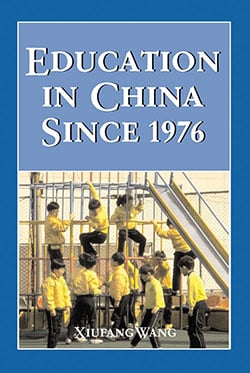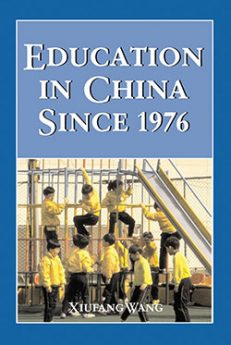Education in China Since 1976
Original price was: $49.95.$39.99Current price is: $39.99.
In stock
About the Book
China has the largest education system in the world. The total enrollment of students in regular and adult schools at all levels exceeds 320 million, accounting for more than a quarter of the nation’s population. Western educators, foreign companies, and individual entrepreneurs have invested in Chinese education but, perhaps because of the complexity of the Chinese education system and the rapid development of educational reforms, have had little success.
This work examines the education system in post–Mao China from 1976 to the present. It explores how the Chinese government sees the development of its educational practices within the nation’s broader social, economic, political, and cultural contexts; how it identifies new issues that emerge in the process of what might be called educational globalization; how it translates these issues into specific educational policies, activities, and goals; how the education reforms fit China’s social and political realities and objectives; how the new policies affect foreign student affairs and Chinese students studying abroad; the ways in which the government promotes international educational cooperation and exchange; the opportunities for Western institutions to introduce programs in China; and current trends and their effect on the internationalization of education.
About the Author(s)
Bibliographic Details
Xiufang Wang
Format: softcover (6 x 9)
Pages: 319
Bibliographic Info: tables, notes, bibliography, index
Copyright Date: 2003
pISBN: 978-0-7864-1394-2
eISBN: 978-0-7864-8213-9
Imprint: McFarland
Table of Contents
Tables and Charts ix
Preface 1
PART I: THE CHINESE EDUCATION SYSTEM
1 Introduction: Managing Educational Reforms 7
2 China’s Educational Administrative System 24
3 Financial System of China’s Education 55
4 Legal System of China’s Education 73
5 Personnel System of China’s Education 104
PART II: CHINESE EDUCATION OF VARIOUS TYPES AT DIFFERENT LEVELS
6 Basic Education (Preschool, Regular Primary and Secondary Education) 129
7 Regular Higher Education 146
8 Vocational Education 188
9 Special Education 200
10 Adult Education 209
11 Distance Education 219
12 Private Education 230
PART III: INTERNATIONALIZATION OF CHINESE EDUCATION
13 International Cooperation and Exchange in China’s Education 239
14 Conclusion: Chinese Educational Development in a Global Economy 261
Notes 283
Bibliography 295
Index 303
About the Author 309
Book Reviews & Awards
“worthwhile…provocative”—China Review International.






